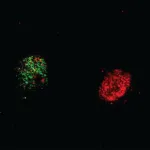SNIS 2024: Medicare continues to undervalue lifesaving stroke surgery
2024-07-25
(Press-News.org) FOR IMMEDIATE RELEASE: July 25, 12:10 P.M. MDT
CONTACT: Camille Jewell
cjewell@vancomm.com or 202-248-5460
COLORADO SPRINGS, Colo. — Despite thrombectomy’s high success rate in saving the lives of stroke patients, Medicare is paying lower rates over time for the procedure, according to research presented today at the Society of NeuroInterventional Surgery’s (SNIS) 21st Annual Meeting.
Three studies, “The Price of Progress — Evaluating Medicare’s Valuation of Stroke Treatment,” “Fiscal Clots in the Stream of Stroke Care: The Mechanical Thrombectomy Reimbursement Dilemma,” and “From Coast to Coast — the Uneven Spread of Lifesaving Stroke Interventions” highlight worsening Medicare reimbursement rates and their potential impact on the availability of thrombectomy.
The first two studies analyzed publicly available data from 34,696 thrombectomy procedures performed between 2016 — when the procedure was widely proven safe and effective — and 2021.
“The Price of Progress — Evaluating Medicare’s Valuation of Stroke Treatment” reveals that, although thrombectomy has saved the U.S. hundreds of millions of dollars in health and social care costs for people who have experienced acute ischemic stroke, Medicare doesn’t pay nearly the total cost of each procedure, which is estimated at $13,000. The average charge for thrombectomy submitted to Medicare during the studied time ranged from $3,083.11 to $3,783.53, but Medicare’s reimbursements averaged from $620.80 to $686.81 — only 18.15% to 21.845% of what was submitted.
“Fiscal Clots in the Stream of Stroke Care: The Mechanical Thrombectomy Reimbursement Dilemma” demonstrates that these reimbursement decreases happened despite thrombectomy procedures nearly tripling during the studied timeframe, from 2,466 in 2016 to 7,210 in 2021. Further, while Medicare’s reimbursement for thrombectomy was decreasing, overall Medicare expenditures were increasing — from $670 billion in 2016 to $829 billion in 2021.
“From Coast to Coast — the Uneven Spread of Lifesaving Stroke Interventions” suggests that inadequate Medicare reimbursement rates in specific regions may disincentivize hospitals from offering thrombectomy services, particularly for Medicare-eligible patients.
“Thrombectomy isn't just the gold standard for treating acute ischemic stroke — it's a lifeline that swiftly restores blood flow to the brain, dramatically improving patient outcomes. Yet, alarmingly, as its efficacy soars, Medicare reimbursement plummets,” said Sneha Sai Mannam, primary author of the studies and a medical student at the University of Pennsylvania, who conducted this research in the NeuroVERT lab under the guidance of Visish Srinivasan, MD. “It is crucial that Medicare's policies evolve to accurately value this essential procedure and ensure universal access, regardless of a patient's financial situation. We cannot allow financial considerations to compromise optimal patient care."
To receive a copy of this abstract or to speak with the study author, please contact Camille Jewell at cjewell@vancomm.com or call 202-248-5460.
About the Society of NeuroInterventional Surgery
The Society of NeuroInterventional Surgery (SNIS) is a scientific and educational association dedicated to advancing the specialty of neurointerventional surgery through research, standard-setting, and education and advocacy to provide the highest quality of patient care in diagnosing and treating diseases of the brain, spine, head, and neck. Visit www.snisonline.org and follow us on X (@SNISinfo) and Facebook (@SNISOnline).
###
END
ELSE PRESS RELEASES FROM THIS DATE:
2024-07-25
A case definition of market-driven epidemics (MDEs) could help address critical barriers to timely, effective prevention and mitigation, according to a study published this week in the open-access journal PLOS Global Public Health by Jonathan Quick from Duke University School of Medicine, U.S., and colleagues.
The misuse and overconsumption of certain consumer products have become major global risk factors for premature deaths at all ages, with their total costs in trillions of dollars. Progress in reducing such deaths has been difficult, slow, and too often unsuccessful. To address this challenge, ...
2024-07-25
Instant buyers, also known as iBuyers, rapidly buy and sell homes using automated models to set prices. These companies, such as Opendoor and Offerpad, can turn around cash offers in a matter of hours, and they’ve captured more than 5% of the real estate market in some U.S. cities.
Since new tech often replicates or exacerbates existing societal biases, University of Washington researchers wanted to investigate how iBuyers have affected the well-documented racial bias in home appraisals — particularly bias against Black homeowners.
The ...
2024-07-25
Researchers from North Carolina State University have developed an array that assesses methylation levels of genes located in imprint control regions (ICRs) within the human genome. The array represents a cost-effective, efficient method for exploring potential links between environmental exposures and epigenetic dysregulation during the early developmental origins of diseases and behavioral disorders.
ICRs regulate the expression of imprinted genes – genes where only one parental copy of the gene is active, while the other copy is silenced early in development. Imprinted genes are of special interest to epidemiologists, geneticists, and toxicologists who study the connections ...
2024-07-25
July 25, 2024 — For patients with cervical radiculopathy, posterior foraminotomy provides outcomes comparable to those of the more commonly performed anterior cervical discectomy, reports a randomized clinical trial in The Journal of Bone & Joint Surgery. The journal is published in the Lippincott portfolio by Wolters Kluwer.
"[O]ur findings provide Level-I evidence that posterior surgery is noninferior to anterior surgery with regard to the clinical outcome, with follow-up of two years," according to the new research by Nádia F. Simões de Souza, MD, and Anne E. H. Broekema, MD, ...
2024-07-25
When we form a new memory, the brain undergoes physical and functional changes known collectively as a “memory trace”. A memory trace represents the specific patterns of activity and structural modifications of neurons that occur when a memory is formed and later recalled.
But how does the brain “decide” which neurons will be involved in a memory trace? Studies have suggested that the inherent excitability of neurons plays a role, but the currently accepted view of learning has neglected to look inside the command ...
2024-07-25
University of Sydney researchers are proposing a new way to curb industrial emissions, by tapping into the “atomic intelligence” of liquid metals to deliver greener and more sustainable chemical reactions.
Despite global efforts towards renewable energy and electrification, chemical production accounts for approximately 10-15 percent of total greenhouse gas emissions. More than 10 percent of the world’s total energy is used in chemical factories, with these numbers rising.
This is due to the large amounts of energy required to cause ...
2024-07-25
Rainfall fluctuates more vigorously. Why? Scientists say it's because of us.
Many people around the world have noticed that rainfall is becoming increasingly erratic. Intense downpours are occurring more frequently, while dry periods seem to last longer and become more severe. These changes have raised concerns and prompted scientists to investigate the links between climate change and these unpredictable rainfall patterns.
A new study provides the first systematic observational evidence that human-induced climate change is making rainfall patterns more volatile globally.
Published in the journal Science on July 26, a joint study by the Institute of Atmospheric Physics ...
2024-07-25
In this Special Issue of Science, four Reviews and a Policy Forum explore the intersections of science, health, and policy related to the air we breathe, tackling topics including how air pollution is monitored, what impacts it has on human health, how those impacts are felt most by populations with fewer resources, and what changes we can make to the built environment to secure clean air.
In one Review, Wei Huang and colleagues discuss the new air quality guidelines from the World Health Organization (WHO) and related challenges ...
2024-07-25
Anthropogenic climate warming has led to increased precipitation variability over much of the globe, according to a new study, which points to several hotspots for this trend. This effect is particularly prominent over Europe, Australia, and eastern North America, say the study’s authors, and is largely driven by increasing atmospheric moistening and decadal-scale changes in atmospheric circulation. As the climate warms, the atmosphere becomes more capable of holding moisture, leading to greater fluctuations between extreme precipitation events and wider swings between wet and dry episodes. Such amplified ...
2024-07-25
Specific neurons in the brain’s zona incerta (ZI) play a crucial role in the early social interactions of an infant and its mother, building their bond and reducing stress, according to a new study in mice. Activation of the same neurons in adult mice increased anxiety- and fear-like responses, the study showed. In humans, as in other mammals, infants have an inborn tendency to form an attachment bond with their mothers or caregivers – a bond that plays a crucial role in the infant’s development. This bond helps newborns feel secure and serves as a safety net from which to explore their surroundings, learn, and develop crucial skills and behaviors. However, the neural mechanisms ...
LAST 30 PRESS RELEASES:
[Press-News.org] SNIS 2024: Medicare continues to undervalue lifesaving stroke surgery



